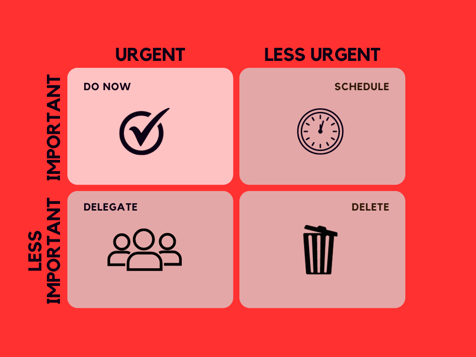Cold environments can significantly influence how robotic systems operate, perform, and age. For...
Gear up for the new year – become more creative and organized
Becoming more creative and organized involves developing certain habits, mindsets, and strategies. By incorporating these mental exercises and organizational strategies into your daily routine, you can enhance your abilities to be a more innovative and productive problem solver.
Embrace your curiosity. Keeping your curiosity piqued by asking questions and seeking out new perspectives. Stay open-minded. Of course, staying open-minded isn't always easy. We all have our biases and preconceptions that can make it difficult to see things from a different perspective. However, by actively challenging our own assumptions and seeking out diverse viewpoints, we can become more open-minded and better equipped to navigate the complexities of the world around us.
Practice Creative Exercises. Creative exercises can greatly enhance your imagination and help you come up with fresh ideas. Reverse idea is a common creative exercise. Take a well-known concept and flip it on its head. For instance, instead of "time is money," try "money is time." This technique can help you unlock fresh perspectives and innovative ideas. Another favorite exercise is doodling. Draw whatever comes to your mind. It doesn't have to be perfect or make sense. Just let your hand move freely on the paper. To learn more, download our whitepaper: info.designatronics.com/improving-creativity-ebook
Challenge Assumptions. Question assumptions and consider alternative viewpoints. Don't be afraid to challenge the status quo. The status quo is not always the best option and challenging it can lead to new ideas and innovations. By questioning assumptions, we can uncover biases and identify areas for improvement.
Set Clear Goals. Define your short-term and long-term goals. Break them down into manageable tasks. Short-term goals are those that can be achieved within a year or less, while long-term goals take several years to accomplish. It is essential to revisit and revise these goals periodically to ensure that they align with my aspirations and current circumstances.
Prioritize Tasks. Use a system to prioritize tasks based on urgency and importance. Consider tools like the Eisenhower Matrix. The Eisenhower Matrix divides your tasks into four categories: the tasks you’ll do first, the tasks you’ll schedule for later, the tasks you’ll delegate, and the tasks you’ll delete.
The first category is for tasks that are both urgent and important. These are tasks that require immediate action and have a significant impact on your goals or well-being. The second category is for tasks that are important but not urgent. These are tasks that contribute to your long-term goals or well-being but don't require immediate attention. The third category is for tasks that are urgent but not important. These are tasks that demand immediate attention but don't necessarily contribute to your goals or well-being. The fourth and final category is for tasks that are neither urgent nor important. These are tasks that don't need to be done at all or can be postponed indefinitely. By using the Eisenhower Matrix, you can prioritize your tasks effectively and avoid wasting time on unimportant or unnecessary activities. By focusing on the tasks that are both urgent and important, and then moving on to the important but not urgent tasks, you can make progress towards your goals while still attending to immediate demands.
The magic happens when you strike a harmonious balance between the two. Make sure to incorporate both structured and unstructured time into your routine. Structured time provides the foundation, while unstructured time allows your mind to flourish and make unexpected connections. Your mind will thank you, and you'll be amazed by the fresh ideas that start flowing!
Remember, developing creativity and organization is an ongoing process. Experiment with different approaches and find what works best for you. It's also important to be patient with yourself as you work towards improvement.




